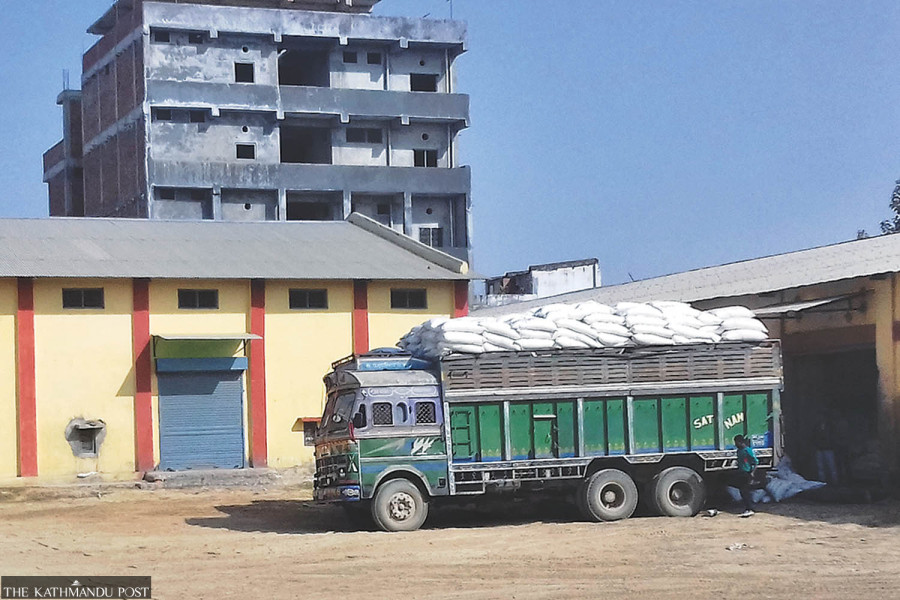Money
Nepal hikes chemical fertiliser prices to curb subsidies
Nepal’s chemical fertiliser subsidy bill is likely to shoot up to a record Rs38.50 billion this fiscal year as import prices have swelled tremendously.
Post Report
The government has jacked up the prices of chemical fertiliser after 10 years, effective from Monday, to rein in the subsidies following the stress on the treasury.
Following the price revision, subsidised diammonium phosphate (DAP), the world's most widely used phosphorus fertiliser, will cost Rs50 per kg, up from Rs43.
Urea will now cost Rs25 per kg, up from Rs14.
Similarly, according to the Ministry of Agriculture and Livestock Development, potash will cost Rs40 per kg, up from Rs31.
The ministry said in a press statement on Monday that prices had been raised to prevent smuggling to India where the soil fortifiers cost more. The move is a bid to save on subsidies as the savings will enable the government to import more fertilisers in line with growing demand.
The practical demand for chemical fertilisers hovers at 520,000 tonnes annually, the ministry said.
Nepal’s chemical fertiliser subsidy bill is likely to shoot up to a record Rs38.50 billion this fiscal year as import prices have swelled tremendously, officials said.
The government earmarked Rs31 billion for the import of chemical fertilisers till February-end, Rs15 billion through the annual budget and Rs16 billion as source assurance.
The Ministry of Agriculture and Livestock Development said that they have received resource assurance from the Finance Ministry for another Rs7.50 billion to procure adequate stocks to prevent shortages during the paddy transplantation season in June.
With that money, the government will be able to import over 400,000 tonnes of essential plant nourishers.
In 2019 before the Covid-19 pandemic, the government could buy that quantity of fertilisers for Rs10 billion.
The government provides subsidies to the farm sector in a bid to keep inflation at bay by raising crop output. But subsidies have not prevented food inflation from going out of control.
In recent months, food inflation has soared by more than 30 percent, according to market analysts.
The price of chemical fertilisers started to increase from the beginning of 2021 due to surging input costs, supply disruptions caused by sanctions (Belarus and Russia), and export restrictions by China, according to the World Bank.
Concerns around fertiliser affordability and availability were further amplified by the war in Ukraine. Fertiliser prices have surpassed their 2008 peaks.
In Nepal, the burden of subsidies has become a test for the new government.
The Finance Ministry decided to cut the budget by 20 percent because the country is short of cash.
“The pressure on recurrent expenditure has grown along with increased liabilities for subsidies on chemical fertilisers," the Finance Ministry said in a recent statement.
Prime Minister Pushpa Kamal Dahal has vowed not to let the country suffer from a chemical fertiliser shortage on his watch.
On January 10, Dahal won a vote of confidence in Parliament, and speaking after the victory, the prime minister “guaranteed” that the government henceforth would not disappoint farmers who have been suffering constantly due to one or the other reason.
The agriculture ministry said that the appreciation of the US dollar added an extra burden on fertiliser prices. The subsidies have increased massively but the quantity of fertiliser has not increased.
According to reports, the price of urea in the global market was $360 per tonne in September 2020, which jumped to $1,022 in April 2022. In August 2008, when there was a global food shortage, the price of urea reached $815 per tonne.
In Nepal, urea is sold to farmers at a subsidised rate of Rs14 per kg.
The average price of DAP, the world's most widely used fertiliser, was $434 per tonne in September 2020, which reached $1,056 per tonne in May 2022.
The highest price of DAP recorded so far is $1,218 per tonne in April 2008. DAP is sold to farmers in Nepal at a subsidised rate of Rs43 per kg.
The agriculture ministry said that the subsidy in urea, before the price hike, was 80 percent, 60 percent in DAP and 59 percent in potash. After the revision, the average chemical fertiliser subsidy is 59.04 percent, a drop from 70.82 percent.
"As per the finance ministry directive, the subsidy will be decreased gradually to 50 percent,” the agriculture ministry said in a statement.
The last time the government hiked the chemical fertiliser price was in December 2012.
The government reinstated subsidies on chemical fertilisers in 2009 to boost agricultural production and ensure food security. Acting on the conditions laid down by donors, the government started deregulating the fertiliser trade in 1997 with subsidies on DAP and potash being completely removed.
Since 2009, the government has been providing a 40-45 percent subsidy on fertilisers.
The government has hiked prices at a time when farmers have been hit by the increased cost of production as farm inputs have become more expensive.




 7.47°C Kathmandu
7.47°C Kathmandu














